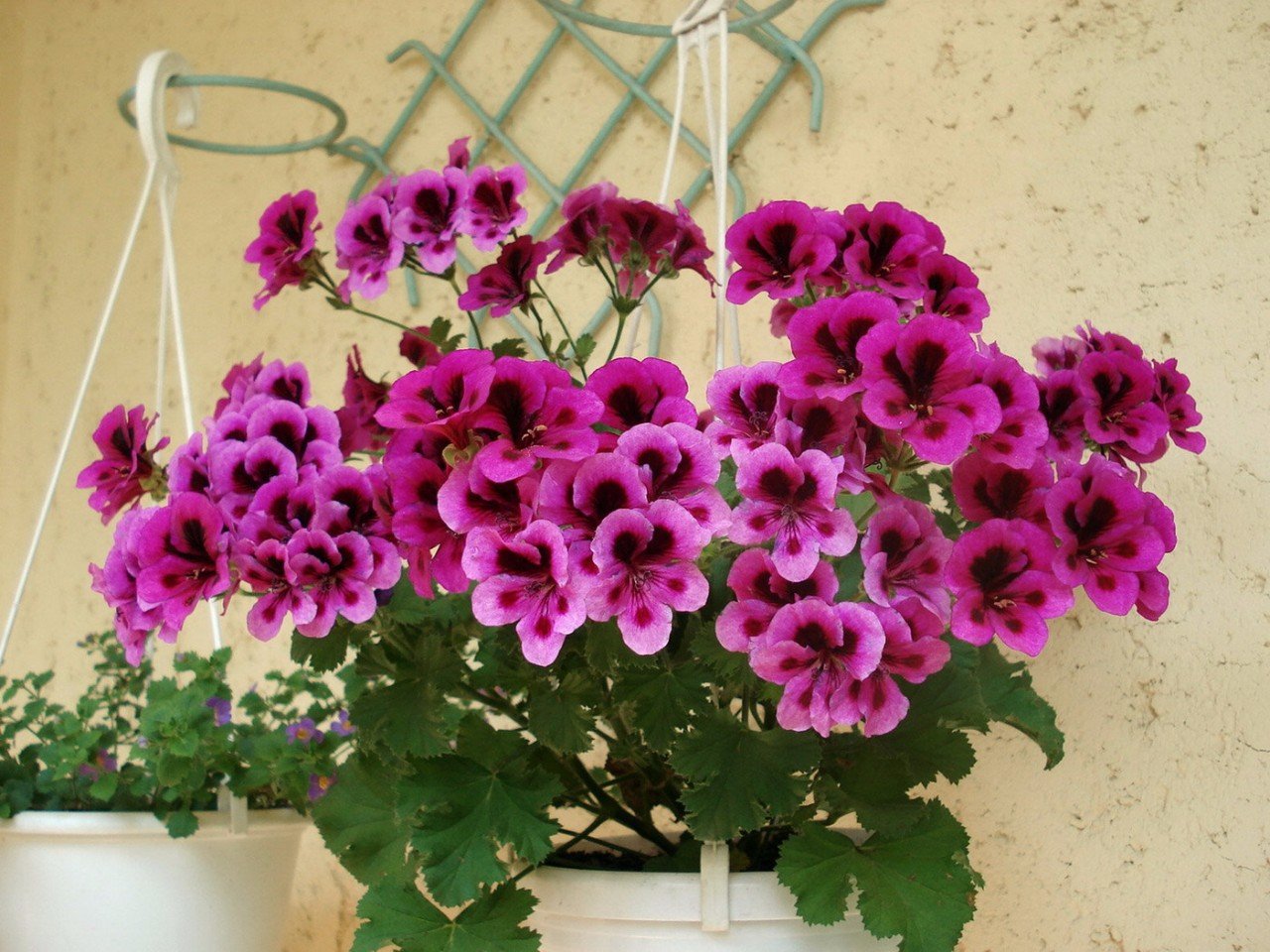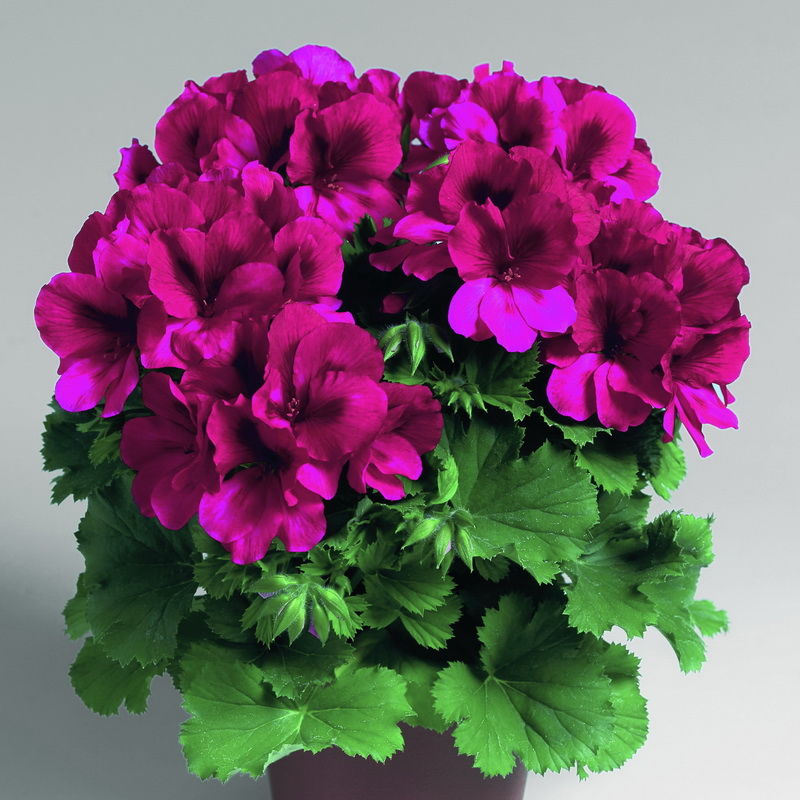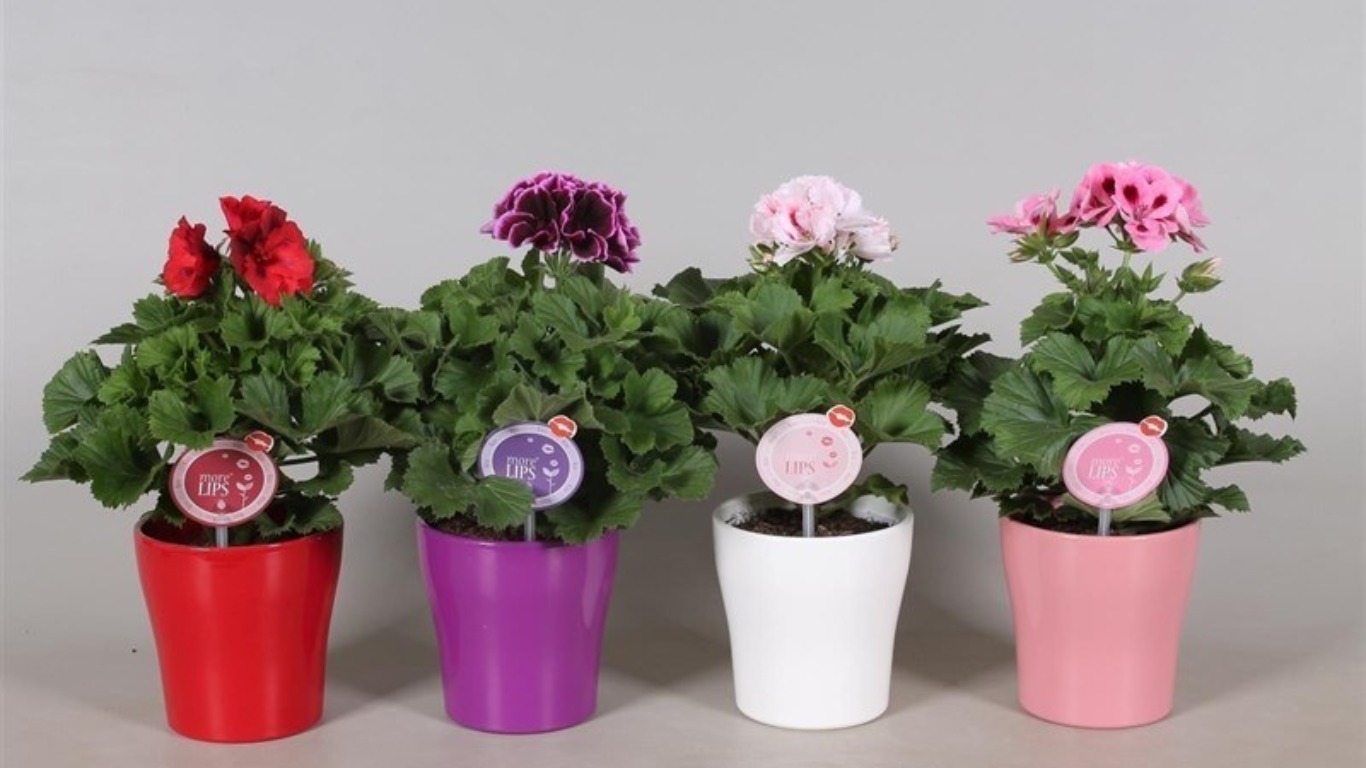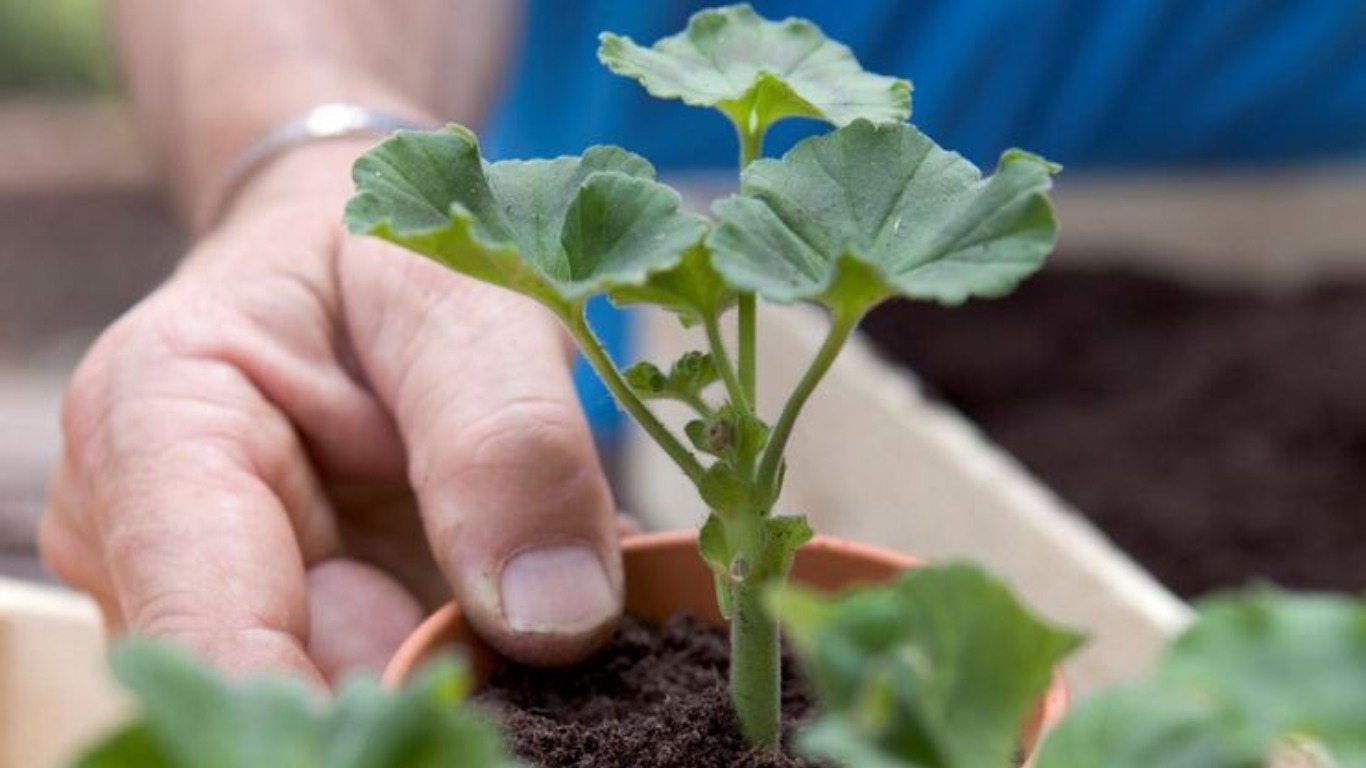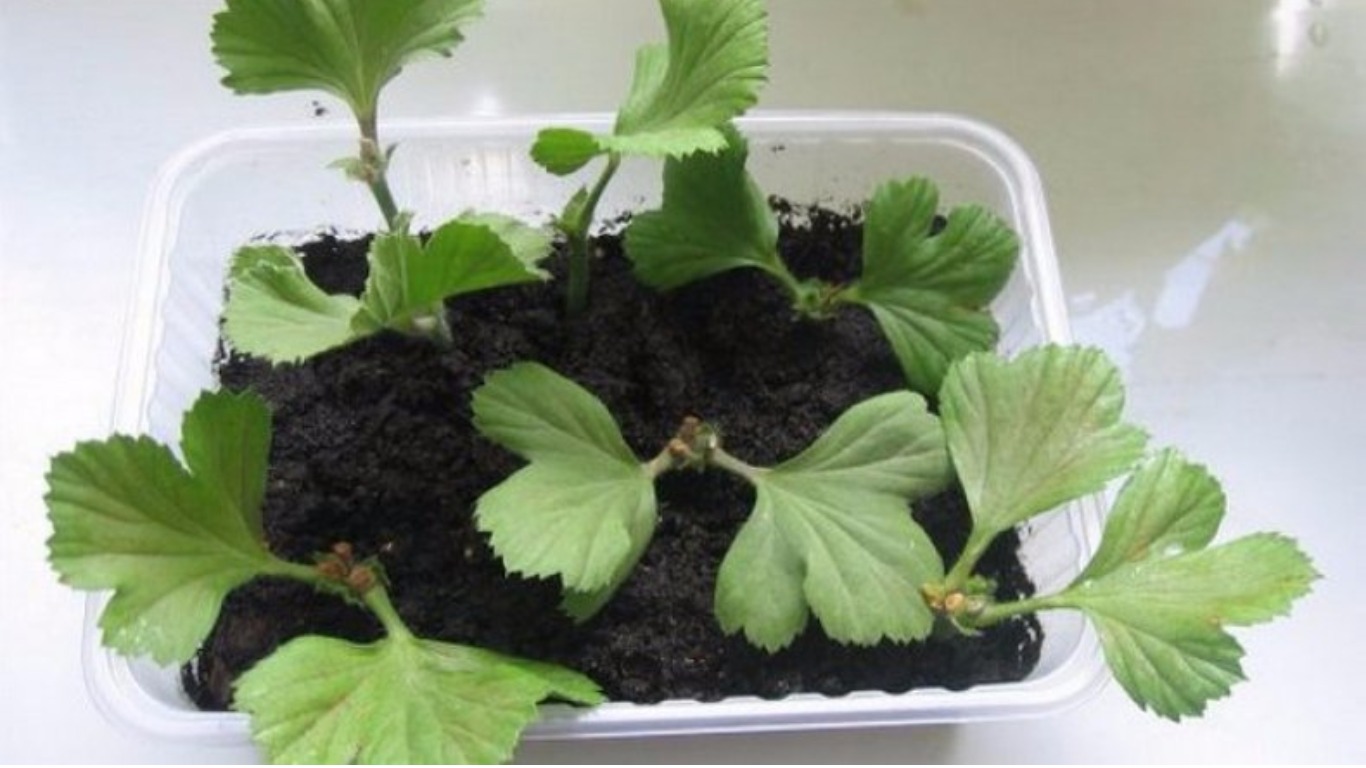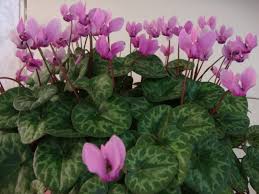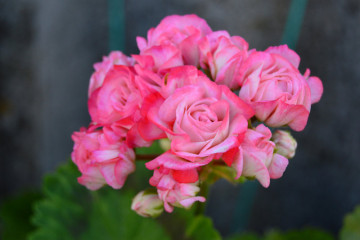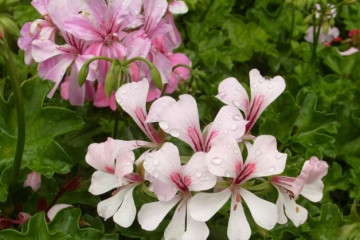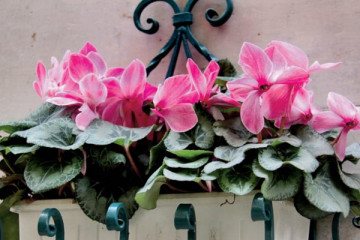Pelargonium Grandiflora - flower care at home
Content:
Pelargonium grandiflora is one of the representatives of the Geraniev family. This pelargonium is also called royal or royal for its luxurious large flowers. They resemble pansies in shape with a diameter of 5 to 7 cm. But, as is typical of aristocrats, grandiflora is distinguished not only by its beauty, but also by its capricious disposition compared to other types of culture. Therefore, in order to achieve lush flowering and full development of the bushes, it is necessary to follow certain rules of care.
Description of pelargonium grandiflora
Royal pelargonium is a close relative of the zonal culture variety. But it cannot be found in natural conditions, since it is obtained by crossing other species. Therefore, the plant differs from its counterparts not only in appearance, but also in its whimsicality to the conditions of detention.
History of the century
The first varieties of grandiflora appeared at the end of the 18th century and were of English origin. They were obtained as a result of improved flower size in common species that were introduced from the Cape Province of South Africa.
But already in 1834, French breeders made their own adjustments to the process of obtaining royal pelargonium. Therefore, during this period, varieties and species appeared with contrasting veins and two bright spots on the upper petals. This group of royal pelargoniums was named the Diadeatum.
The decisive step in the selection of grandifloras was made by the gardener James Audier, who managed to achieve that the veins on the petals turned into spots, and in the end there were 5 pieces per flower.
Features of the
Geranium grandiflora, as the common people sometimes mistakenly call a flower, forms a bush up to 50 cm high and at the same time grows more in width than up. Her leaves are densely located on the shoots. The plates are large, rounded, rough to the touch, serrated along the edge. They can be light or dark green. The root system is fibrous.
In the royal variety, the flowers consist of 5 petals. Moreover, the top three are much larger, and the bottom two are smaller. The petals go over each other. Flowers can be simple or double. The color of the petals is very diverse: from white, pink and orange to red and dark cherry. The petals can be corrugated and wavy, have a bright spot or stripes.
Due to the high decorative qualities of the plants, it is widely used to decorate glazed balconies, terraces, loggias and home interiors. The flowering period for grandiflora begins in April-May and lasts for 3-4 months, depending on the conditions of detention.
At the same time, pelargonium grandiflora is not intended for growing in the garden, since it does not bloom in the open field.
The plant is characterized by rapid growth - at the end of the first season, you can get a compact bush 20-30 cm high, and in the next season, royal pelargonium reaches a standard size. As they mature, the shoots lignify below, like in other species.
Planting large-flowered pelargonium
Pelargonium large-flowered is very demanding on care and maintenance conditions. Therefore, novice growers need to take this into account. Failure to comply with the basic requirements of the culture can lead to the absence of buds throughout the season.
For the plant, it is necessary to select small pots with drainage holes, the volume of which will be 2 times the root system.
Site selection and lighting
Royal Pelargonium needs good lighting. Therefore, it is recommended to place the flower pot on the lightest windowsill in the house with light shading from direct sunlight so that burns do not appear on the leaves.
In winter, for the full development of the bush, it is necessary to provide at least 10 hours of daylight. Therefore, phytolamps should be turned on in the evening.
Priming
For the royal variety, you should purchase a substrate intended for growing pelargonium. It has good moisture and air permeability and a balanced composition. In the absence of such a soil in the store, you can prepare it yourself by connecting the following components:
- 1 part - turf;
- 1 part - humus;
- 1 part - sand;
- Part 1 - peat.
Before planting, expanded clay should be laid on the bottom of the pot with a layer of 1.0 cm. And then sprinkle it with a nutritious substrate. Place the flower in the center of the container without deepening the root collar and fill the resulting voids with soil.
After planting, water the plant abundantly and put it in a shaded place for 2-3 days.
Caring for large-flowered pelargonium grandiflora
The royal variety of the flower also requires adherence to certain rules of care. Therefore, before purchasing this flower, you need to familiarize yourself with them.
Temperature regime
During the period of active vegetation and flowering, which lasts from early spring to mid-autumn, the maintenance regime should be within +20 .. + 27 degrees. But, from mid-October to the end of January, the grandiflora is dormant, so it is important to provide it with a temperature of about +12 .. + 17 degrees.
Thanks to the cool content during this period, the plant is gaining strength for lush flowering in the new season.
Watering and spraying
Pelargonium grandiflora is drought tolerant, but roots should not be allowed to dry out. Therefore, watering is recommended when the top soil layer in the pot dries out. For this, it is recommended to use rain or settled water at room temperature.
In hot periods, it is recommended to moisten the soil 2 - 3 times a week, and in autumn-winter time 1 time in 7 days. Such pelargonium does not need to be sprayed on foliage.
Loosening
After each watering, it is recommended to slightly loosen the soil in the pot to improve air access to the roots.
Air humidity
Royal Pelargonium can grow and develop in both dry and humid air. But the maximum level of decorativeness is achieved when grown at moderate indoor humidity.
Top dressing
Royal Pelargonium needs nutrients to grow and bloom. Therefore, the flower needs to be fertilized regularly.
In spring and summer, it is recommended to do this every 10 days, and in autumn and winter - once every 3 weeks. For top dressing, you should use special fertilizers for pelargonium or flowering crops, which can be purchased at any flower shop.
Pruning
To form a lush compact bush, Pelargonium grandiflora must be cut off in the fall. During this period, the shoots should be shortened by 1/3, and all dried and damaged areas should be removed.
Transfer
Pelargonium grandiflora belongs to the category of flowers that do not really like transplanting. Therefore, this procedure should be carried out only if the plant has slowed down its growth, the buds and leaves have become smaller.
How grandiflora reproduces
You can propagate royal pelargonium in different ways: by seeds, cuttings and air layers. Each of them has certain characteristics, so you should familiarize yourself with them.
Seeds
This method is the most laborious and time consuming, but it allows you to get a large number of new seedlings. At the same time, you can purchase planting material of the same variety and mixes.
Seeds should be sown in a moist soil mixture of turf, peat and sand in a ratio of 2: 1: 1 to a depth of 0.5 cm. After that, the container should be placed in a bright place with a temperature of +22 .. + 26 degrees. The first shoots appear after 2 weeks.
Cuttings
The vegetative method is considered the easiest. It should be used in spring and summer.
For propagation, it is necessary to cut the apical cuttings with 3-5 leaves. Then dry the lower cut for 2-3 hours, and only then powder it with a root former and plant it in the soil, consisting of sand turf and peat in equal proportions.
For successful rooting, it is recommended to keep the soil constantly slightly moist and the temperature within +22 .. + 25 degrees.
Air layering
For reproduction of pelargonium in this way, it is necessary to measure the length of the cutting from the top of the shoot and make an oblique incision in depth by 1/3 of its width. Then powder the cut with any root former and put a piece of a match inside to prevent tissue fusion.
Then, a little below the cut, it is necessary to make a cuff from a film and put wet sphagnum moss inside. In such an environment, roots are formed after 2 weeks. After that, the layers must be cut 1.5 cm below the cuff and planted in the usual soil mixture.
Diseases and pests, the fight against them
If the rules of care at home are violated, pelargonium grandiflora is affected by diseases and pests. In this case, it is recommended to treat the plant with chemicals to prevent the death of the flower.
Common diseases:
- powdery mildew;
- rust;
- leaf spot;
- root rot.
For treatment, it is recommended to use drugs such as "Horus", "Skor", "Topaz", "Maxim", "Previkur Energy".
Pelargonium of this species is susceptible to damage by aphids and whiteflies. To get rid of these pests, it is recommended to spray the bush with a working solution "Aktellika" and "Fitoverma", as well as watering "Aktara"
Pelargonium grandiflora is a prominent representative of the Geraniev family. It is distinguished by unusually beautiful flowers. But the difficulties in growing it are associated with the increased exactingness of the plant to the conditions of detention. Therefore, only experienced florists who are able to follow all the recommendations can cope with them.
